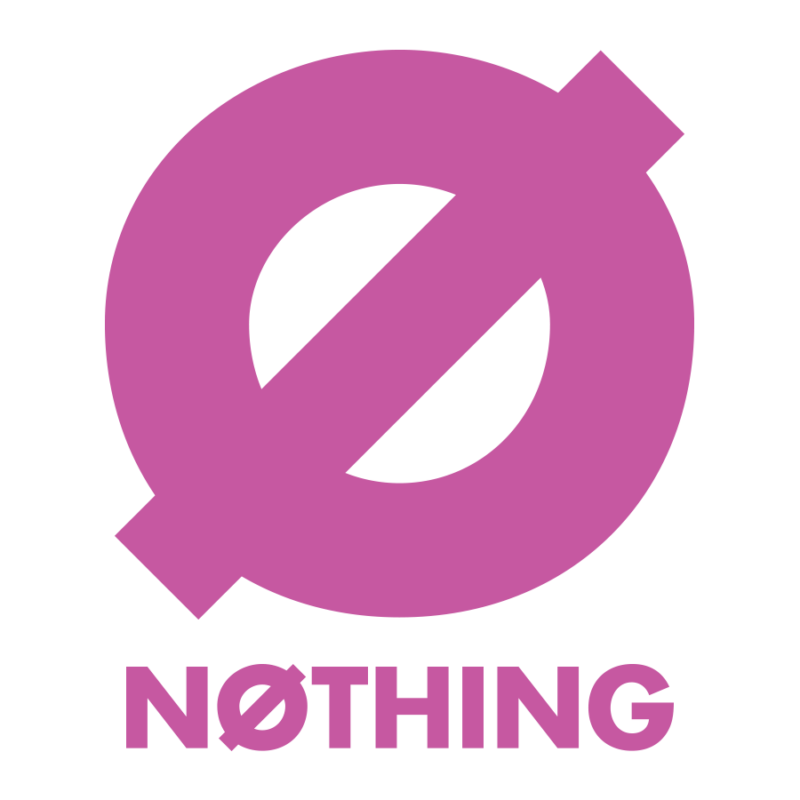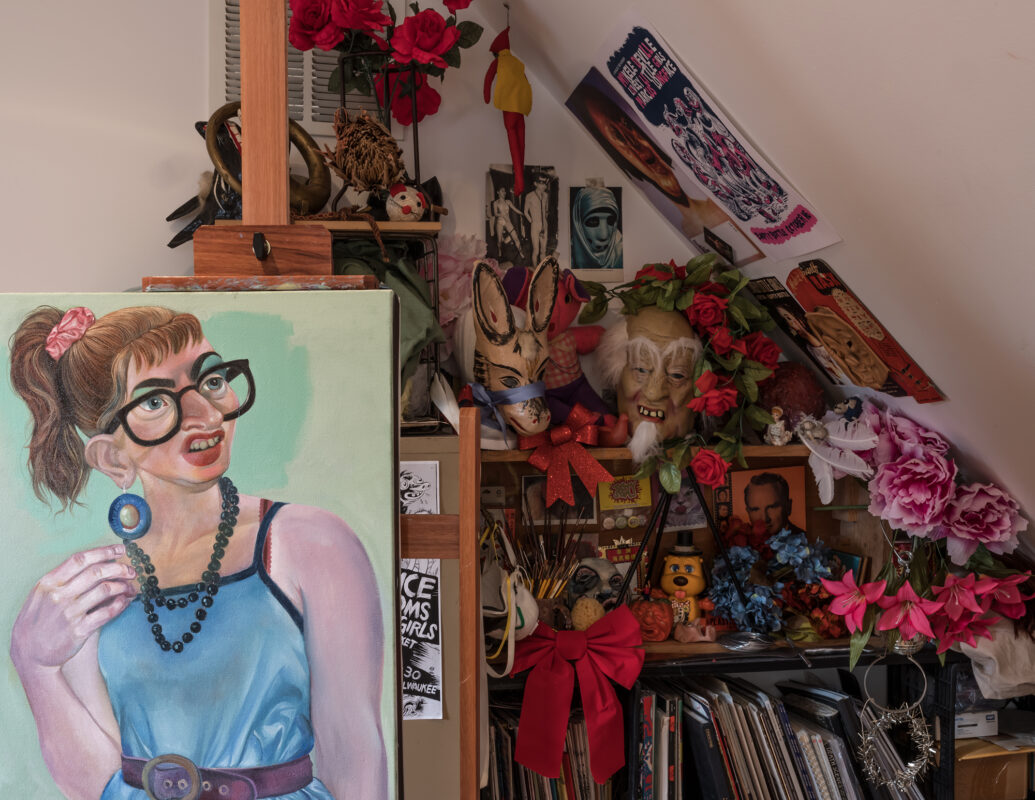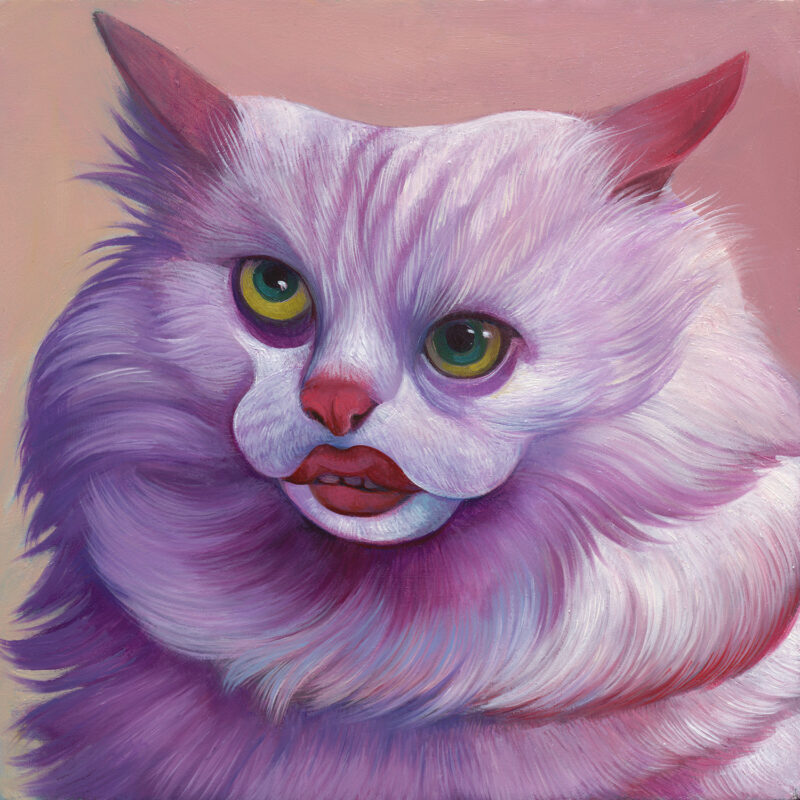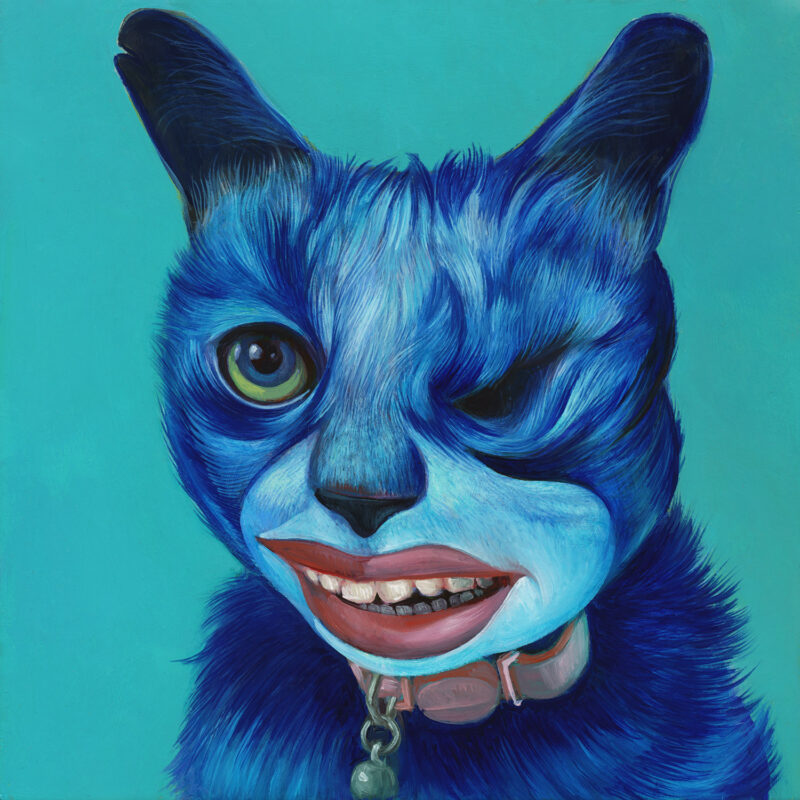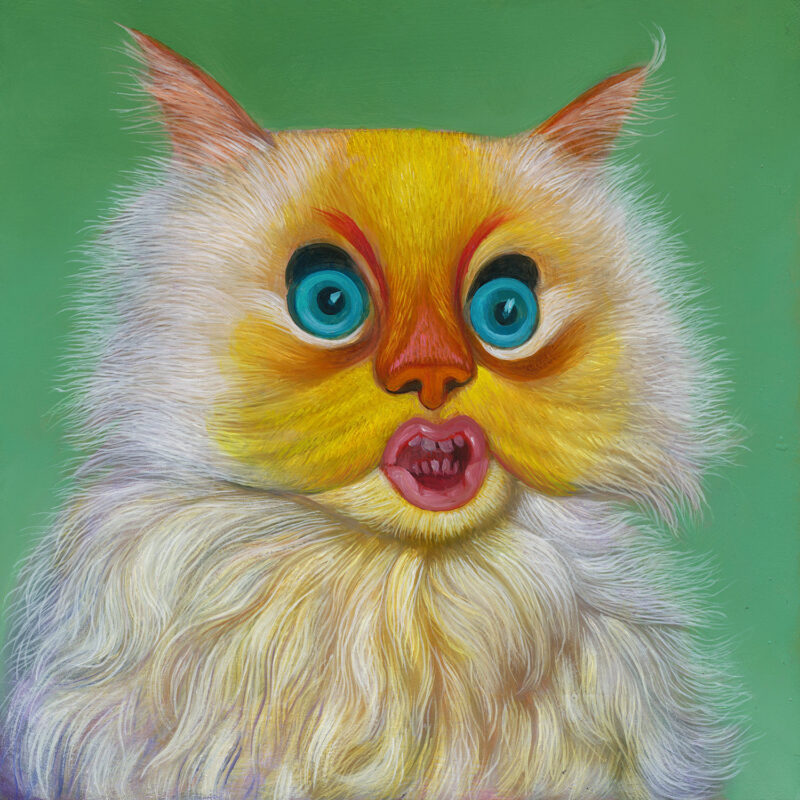Gregory Jacobsen’s oil paintings are arousing, yet make me sick to my stomach, which only makes me stare at them longer. His paintings allow me to dive into the inner-workings of my mind, as I try to decide which images entice me and which ones repulse me — and if those differences even matter.
He also does cat paintings, if awakening the Devil’s desire residing in your belly isn’t your thing, but as you can see, these cat oil paintings take meme-like essence when Jacobsen paints them for you.
Jacobsen works from his attic in Chicago. A room filled with obscure masks, posters, photos, and tchotchkes; some he created, others that friends gave him. The spacious attic (at least for my L.A. sensibilities) is his home base, where he occasionally performs for us on Instagram Live.
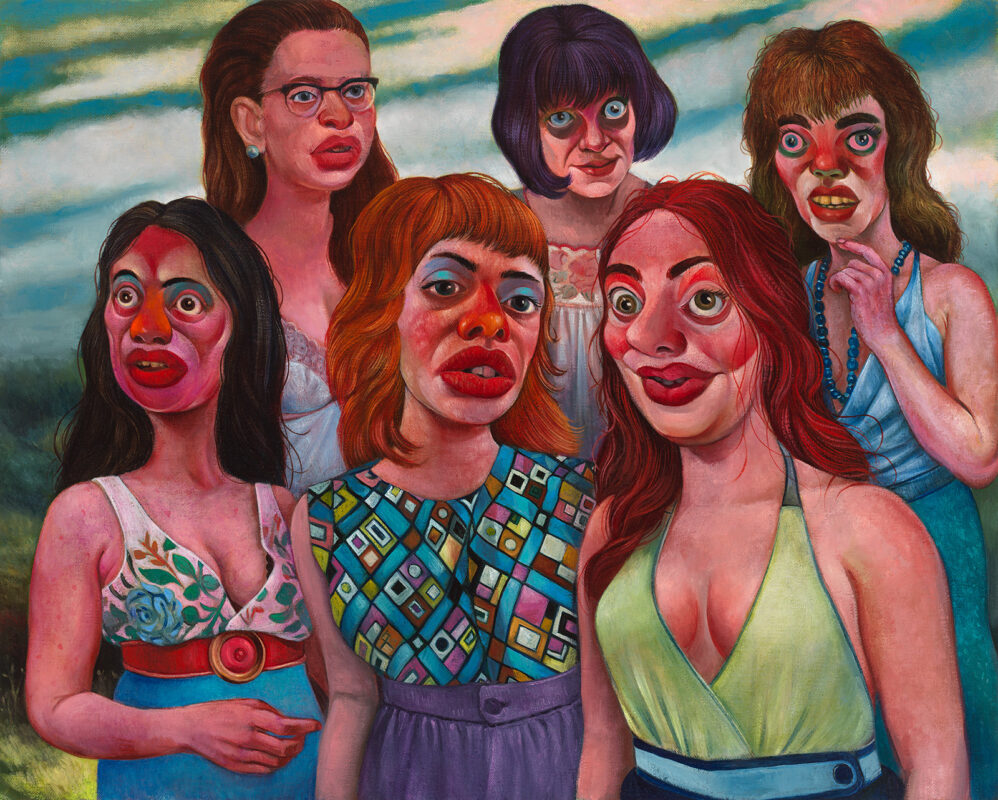
Wonderful Time
Was surrealism always your shtick? How would you describe your art style in your own words?
I never really related to Surrealism. There’s some of that in there, but I always found it a bit too random and completely humorless. My work focuses on details that obsess me; the little things that often go unnoticed, but can become exaggerated in your mind to absurd degrees.
How do you start your process? What gets you going artistically?
I try not to be too precious with ideas and try to fart them out. Lots of failures and misdirections. I work until it hits a note that is emotionally dissonant and resonant. Sometimes it comes quick, sometimes it takes a lot of work to get there.
What was your inspiration for the first cat portrait?
I made the first one sorta as a goof. I’m mostly known for paintings of gross stuff, so I thought it would be funny to paint something cute. Of course, I’m kinda incapable of that, so a definite weirdness came through. It hit a perfect balance.
Kedi, Don Tickles, Thundercat
Other paintings reveal another heavily-sexual side with genital like features in fruit or alien like orgies, where do those images come from?
Sexy yet grotesque! It has an appealing corporeal weight to it. Lots of texture. Lots of folds.
Your mural size paintings all feel like they tell a story in a Bosch-like layout, would you ever cite him as a source of inspiration? How would you say you are similar, different?
Bosch is definitely an inspiration for the multi-figure paintings. It’s amazing how he crammed so many details into his scenes. The imagination of the various isolated tableaux is astounding. I’m always thinking about how I can make characters’ interactions more insane.
A lot of inspiration also comes from music — something like Momente by Stockhausen, where he composed in “moments,” or cells of activity, and arranged them into a very abstract progression of events. The hardest part is arranging all the chaos into a concise composition that also feels loose, yet a singular captured moment. It’s something which I always look to in Bosch painting. I’m not sure if I’m always successful.
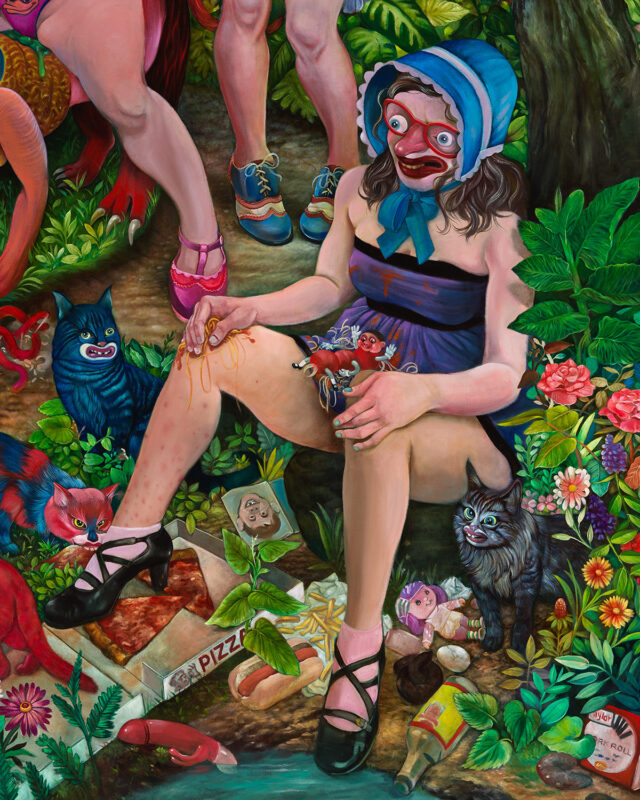
The Days Bounty
Of course, your paintings focus on the comedy of it all, like the absurdity of a girl in Donald Duck panties paired with a crown. But most faces in the painting look stoic. Do you think your characters enjoy their murderous orgies, or is it automatic for them?
I am always striving to convey a sort of concentrated ecstasy in my characters. Sometimes this comes in the form of an absolutely stupid grin, a gaping maw of horror/pleasure, or a face very focused on achieving that final climax. I also look to a lot of Medieval paintings where it seems the characters are resigned to their sad fate. It’s existential hilarity!
Am I overthinking it? Does the expressionless face add to the comedy for you? Like would a happy face be more creepy because of their setting.
Too many happy faces would put too simple of a reading on a painting. There needs to be some emotional dissonance and complexity. I never thought of the faces as being emotionless though.
You said you love farting out ideas, how important is oil paint to your artwork?
It’s very important. I have grown to hate drawing. I find I can only render properly with paint these days. I like the tactile quality of oil paint. I like when it gets a bit stiff it’s almost as if I’m sculpting with it. I can push and pull paint around until something clicks. With oils, I can also make something glow, be really beautiful, like a rare gem. It’s important to lure viewers into the weirdness with beauty.

Tropical Paradise
When did you start hosting live painting sessions on Instagram?
I would do them multiple times a day five years ago. To my surprise people still remember them and ask me to do them again. I have tried to restart it over the years, but found it too distracting. I have no idea how I did it back then — I would be focusing on the painting with a phone obscuring most of my sight, while also scanning the chat feed conversing with people. I started back up a few days ago and I’m getting back into the rhythm of it. I do it because painting can be a lonely endeavor! Also, it gets me out of my head, sorta puts me in a trance where I’m “performing.” I paint from muscle memory rather than overthinking decisions.
It’s funny that having a Instagram live puts you in a space where you paint with less thought. I would think it would add more pressure. Why do you think the performance angle helps?
Performance is pressure. I have been in bands or have done performances for many years. At some point through the repetition and rehearsal, your on-stage actions become automatic. You feel the pressure and go into muscle memory — be it the song you rehearsed a million times, moving on stage, interacting with an audience, dealing with unexpected situations that arise. I find that through using the vehicle of a meticulously rehearsed set of music, I am able to play around within form, I’m not overthinking, things come out that would not have if I was analyzing every decision. Transfer those ideas over to live painting.

